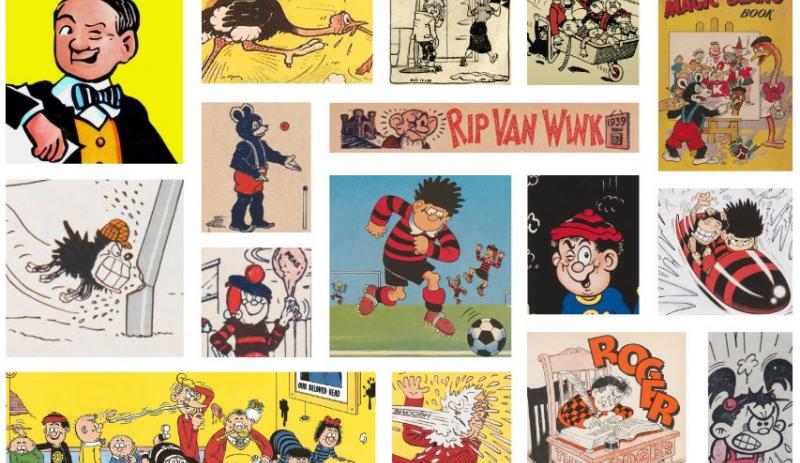DC Thomson - Beano's 80th Birthday
On July 30th 1938, seven months after the Dandy was first published, DC Thomson launched the second of its "funny boys' papers" – Beano. Little did they know, this comic would go on to become the world’s longest-running weekly comic and a beloved British pop culture icon. Eighty years later we look back at some of Beano’s most cherished moments.
1930s
The 1930s
Big Eggo the ostrich was Beano’s first cover star. Editor R.D Low couldn’t initially decide about which would make a better character – an ostrich or an ape. After consulting his children, Low instructed artist Reg Carter to characterise the ostrich’s goofy features and Big Eggo was born.
Big Eggo would remain on the cover for nearly a decade, eventually being replaced by Biffo the Bear in 1948. The early days of the comic featured adventurous stories, like Morgyn the Mighty and The Adventures of Tom Thumb, alongside humorous comics like Wee Peem, Little Dead-Eye Dick, and the iconic Lord Snooty.
Early editions also saw the birth of classic Beano characters like Pansy Potter and Strongman’s Daughter.
Only 12 copies of the first issue exist today. In 2004, a first issue Beano sold for £12,100 at auction – at the time, this was the highest price ever paid for a British comic.
1940s
The 1940s
The 1940s were a turbulent time for Scotland and the world. With WW2 on Britain's doorstep, Beano faced paper and ink rationing, forcing it into a fortnightly publication schedule. Beano actively supported the war effort with stories mocking Hitler and Mussolini. In fact, these humorous strips angered Hitler so much that Beano’s editor George Moonie was on the hit list of newspaper editors that were to be captured and killed following German invasion.
1950s
The 1950s
Dennis the Menace kicked off the 1950s in style when he appeared on the scene in 1951. It’s believed that editor George Moonie got Dennis’ name from an old music hall song which went “I’m Dennis the Menace from Venice”. David Law designed the original strips to feature a minimal background to increase the idea of speed. At the time, this was a groundbreaking style completely new to the comic book world. The early Dennis strips didn’t include his iconic red and black striped sweater. In fact, his sweater doesn’t appear until later in the year. The early 1950s also saw the creation of Beano characters like Roger the Dodger, Minnie the Minx, and The Bash Street Kids.
1960s

The 1960s
While the paper rationing from WW2 had stopped many years before, the Beano comic didn’t increase its page count till the early 60s. The additional four pages required more resources, so prices also had to increase. To help soften the blow on children’s wallets, Beano comics started to include free gifts like The Beano Flying Snorter and The Beano Clickitty Clicker.
Billy the Whizz races onto the pages during the mid-60s while Gnasher, Dennis’s faithful pet, appears in the late 60s. David Sutherland draws The Bash Street Kids for the first time in 1962, a job he's still doing to this day. David would also draw Dennis & Gnasher, Biffo the Bear, Gnasher & Gnipper, and many others over the years.
During the 1960s, Harry Cramond takes over editorial duties for the next two decades.
1970s

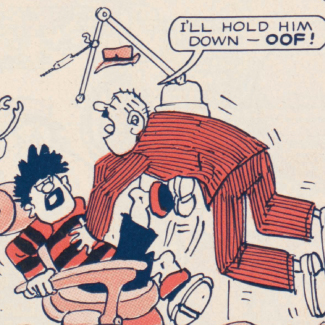
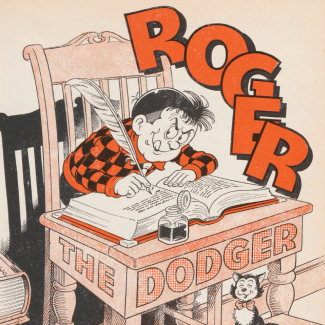
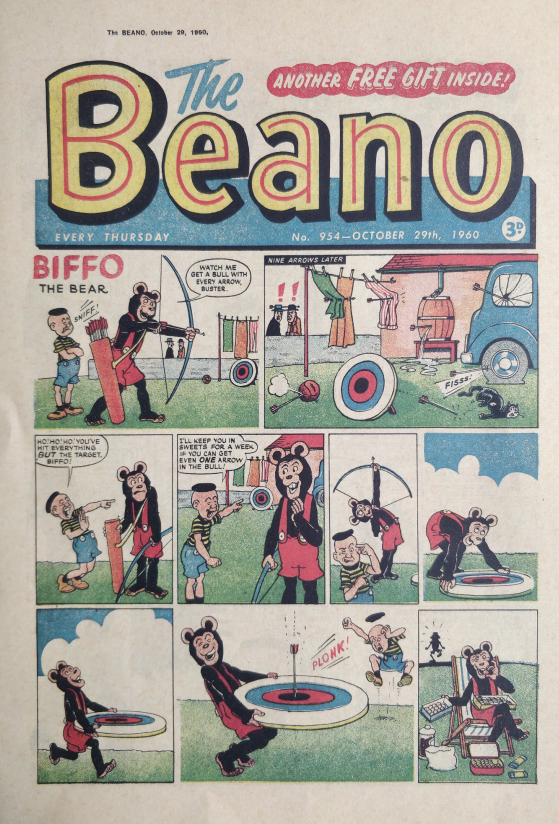

The 1970s
Dennis’s popularity continues to grow. In 1974, he replaced Biffo the Bear as Beano’s cover star, where he has remained ever since. On June 5th, 1976, the Dennis and Gnasher fan club was launched. For the price of a postal order, members received a membership card and two badges in a plastic wallet. The Dennis and Gnasher fan club enrolled over 2,000 new members every week till 1998 when Beano Club replaced it.
1980s

The 1980s
The 1980s ushered in new Beano characters like the bath-adverse Smudge, the toddler-terror Ivy the Terrible, and the critically unlucky Calamity James. Euan Kerr also takes over editorial duties and serves as editor for two decades.
In March 1986, a terrible event unfolded that traumatises Dennis and Beano characters – Gnasher goes missing! Gnasher’s disappearance sparked one of the longest running serials in Beano’s history. After seven tearful weeks, Gnasher returned home with his offspring Gnipper in tow.
1990s

The 1990s
During the early 1990s, Lord Snooty, one of Beano’s oldest characters, stops appearing and Beano is printed in full-colour for the first time. Towards the end of the decade, Dennis becomes a big brother when his sister Bea is born.
2000s

The 2000s
The 2000s ring in new strips, like The Riot Squad and Fred’s Bed, and in 2006, Alan Digby takes control of the Beano comic. Some style changes are made, such as a broader more saturated colour palette, glossy paper, and a new Beano character appears in the logo each week.
2010s
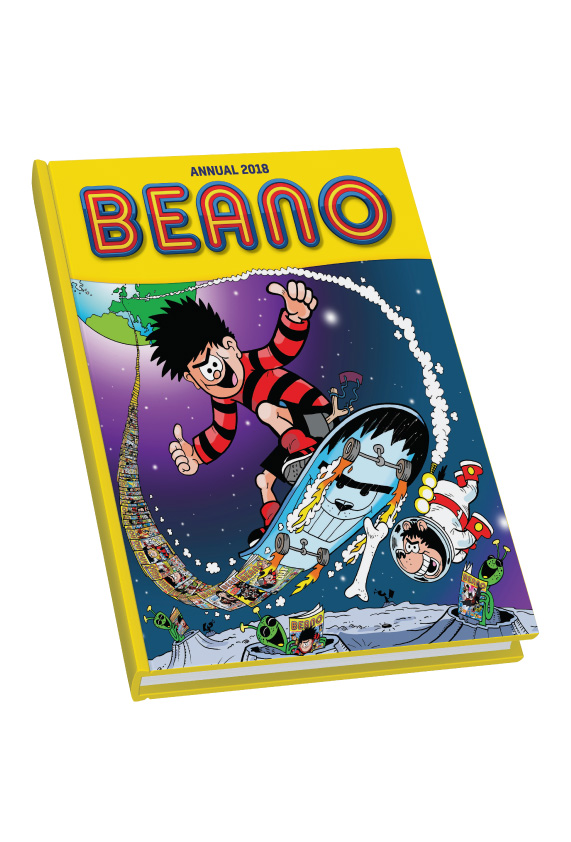
The 2010s
The 2010s were a decade of celebration. Under the leadership of Michael Stirling (2011-2012), Craig Graham (2012-2016) and John Anderson (2016-present), Beano reached several milestones:
In 2013, Minnie the Minx had her 60th birthday. In 2015, the 3,800th issue of the Beano comic broke the Guinness World Record for longest running weekly published comic.
In 2016, a news feed launched on Beano.com to give Beano fans their daily dose of crazy fun. Today, Beano has sold over 1.86 million copies with an issue sold every 17 seconds in the UK. And on July 30th, 2018, Beano celebrated its 80th birthday!

